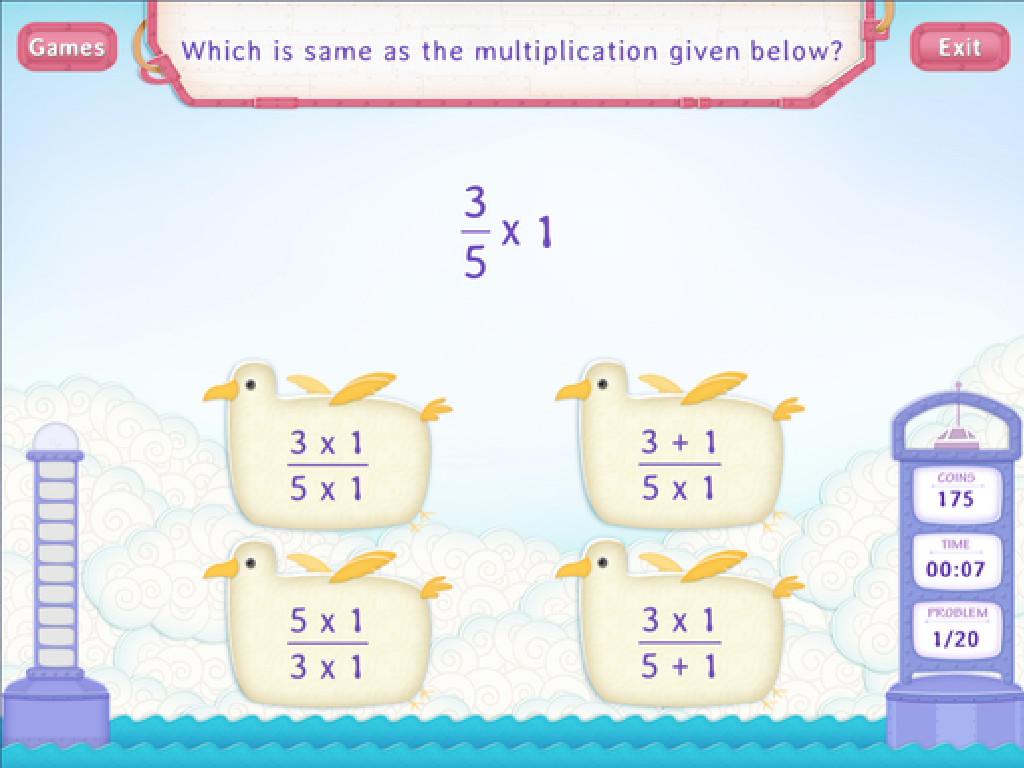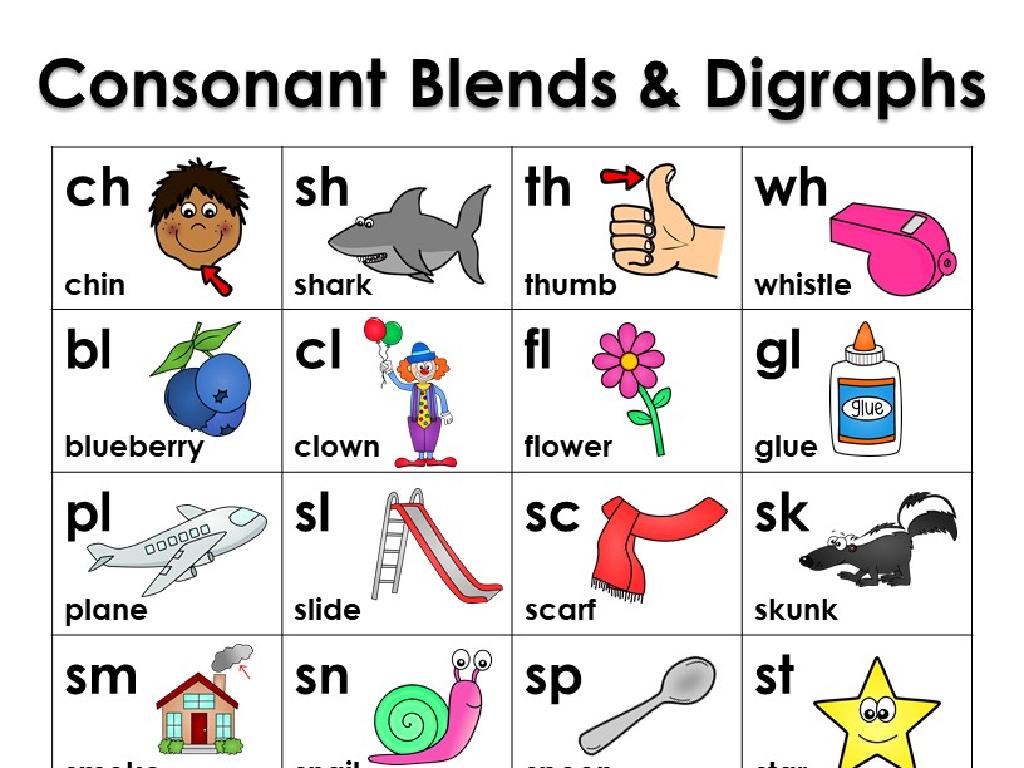Identify Factors
Subject: Math
Grade: Sixth grade
Topic: Number Theory
Please LOG IN to download the presentation. Access is available to registered users only.
View More Content
Identifying Factors in Number Theory
– What are factors?
– Factors are numbers we multiply to get another number.
– Factors as building blocks
– Like building blocks, factors combine to form whole numbers.
– Significance of factors
– Understanding factors is crucial for math concepts like division and fractions.
– Factors in real-life scenarios
– Factors are used in grouping objects and determining quantities in packages.
|
This slide introduces the concept of factors within the realm of number theory. Begin by explaining that factors are the numbers you multiply together to get another number. Emphasize that just as building blocks come together to create structures, factors combine to form whole numbers. Discuss the importance of factors in various mathematical operations and concepts, such as division, greatest common divisors, and simplifying fractions. Illustrate the relevance of factors in everyday life, such as dividing items into groups or understanding how items are packaged based on quantity. Encourage students to think of factors as a fundamental tool that helps in breaking down and understanding numbers in both academic and practical situations.
Understanding Factors in Number Theory
– Define a mathematical factor
– A factor is a number that divides another without leaving a remainder.
– Factors result from multiplication
– When two numbers are multiplied, the result is a product; the multipliers are factors.
– Example: Factors of 6
– 1 x 6 = 6 and 2 x 3 = 6, so 1, 2, 3, and 6 are factors of 6.
– Practice finding factors
|
This slide introduces the concept of factors in number theory. Begin by defining a factor as a number that divides another number completely, without leaving any remainder. Emphasize that factors are the building blocks of multiplication and division in mathematics. Use the number 6 as an example to show that 1, 2, 3, and 6 are all factors because they can be paired to multiply and result in 6. Encourage students to practice by finding factors of different numbers, starting with smaller ones and gradually moving to larger numbers to build their understanding and confidence.
Finding Factors of Numbers
– Steps to find a number’s factors
– List all pairs of numbers that multiply to give the number
– Use multiplication pairs
– Example: For 6, pairs are (1,6) and (2,3)
– Class activity: Factors of 12
– We’ll identify all factor pairs of 12 as a class
|
This slide introduces the concept of finding factors, which are numbers that divide into another number without leaving a remainder. Start by explaining the process of listing out multiplication pairs that result in the given number. For example, if the number is 6, the multiplication pairs would be (1,6) and (2,3). During the class activity, guide students to find all factor pairs of 12, which are (1,12), (2,6), (3,4). This exercise will help students understand the concept of factors through a practical and interactive approach. Encourage students to work in pairs or small groups to foster collaboration. After the activity, discuss the importance of factors in various aspects of mathematics, such as simplifying fractions or finding common denominators.
Factors in the Real World
– Understanding factors
– Factors are numbers we multiply to get another number.
– Organizing objects equally
– Like dividing 12 cookies into 3 equal groups of 4.
– Arranging chairs: a real-world problem
– How many chairs per table for 24 guests if each table seats 4, 6, or 8?
– Factors help in planning
|
This slide aims to show students how the concept of factors is applicable in everyday life, such as organizing or planning events. Start by explaining what factors are with simple definitions and examples. Then, demonstrate how factors can be used to divide objects into equal groups, which is a common task in various settings. Use the chair arrangement problem to illustrate how factors are practical and necessary for event planning. Encourage students to think of other scenarios where identifying factors would be useful. This will help them understand the importance of factors in both mathematical and real-world contexts.
Prime and Composite Numbers
– Define prime numbers
– A prime number has only two factors: 1 and itself, e.g., 2, 3, 5, 7
– Define composite numbers
– A composite number has more than two factors, e.g., 4 (1, 2, 4), 6 (1, 2, 3, 6)
– Identify primes and composites
– Use factor trees or lists to determine if a number is prime or composite
– Factorization method
|
This slide introduces students to the concept of prime and composite numbers, which are foundational in number theory. Prime numbers are those that have exactly two distinct positive divisors: 1 and the number itself. Examples include 2, 3, 5, and 7. Composite numbers, on the other hand, have more than two factors. For instance, 4 can be divided by 1, 2, and 4, and 6 can be divided by 1, 2, 3, and 6. To identify whether a number is prime or composite, students can create factor trees or list out all the factors of a number. Understanding these concepts is crucial for future topics in mathematics, such as finding the greatest common divisor or least common multiple. Encourage students to practice with different numbers to become comfortable with the process of identifying primes and composites.
Class Activity: Factor Hunt
– Explore factors in everyday numbers
– Pair up for a factor-finding mission
– Work together to find all factors of your number
– Each pair gets a unique number
– You might get numbers like 12, 18, or 24
– Share your factor findings with the class
|
This interactive activity is designed to help students identify factors of numbers in a fun and engaging way. Start by explaining what factors are: numbers that can be multiplied together to get another number. Then, assign each pair of students a different number, preferably within the range of 1-100 for manageability. Encourage them to list all the factors of their assigned number. After they have completed the task, ask the pairs to present their findings to the class, explaining how they determined the factors. This will not only reinforce their understanding of factors but also develop their collaborative and communication skills. Possible variations of the activity could include finding factors of their age, the current year, or numbers found in the classroom like page numbers or the number of chairs.
Wrapping Up: Factors and Homework
– Review of factors identification
– Significance of learning factors
Understanding factors is crucial for future math concepts.
– Homework: Factors of 1-50
List all factors for each number and highlight any patterns observed.
– Spot the prime numbers
Use the factors to determine which numbers are prime.
|
As we conclude today’s lesson on identifying factors, it’s important to emphasize the role that understanding factors plays in mathematics. Mastery of this concept is foundational for topics like fractions, least common multiples, and greatest common divisors. For homework, students are tasked with finding all factors of numbers 1 through 50. This exercise will reinforce their understanding and help them recognize prime numbers, which have only two factors: 1 and themselves. Encourage students to look for patterns and use strategies discussed in class to efficiently find factors. Remind them that prime numbers are the building blocks of all numbers and understanding them is key in number theory.





